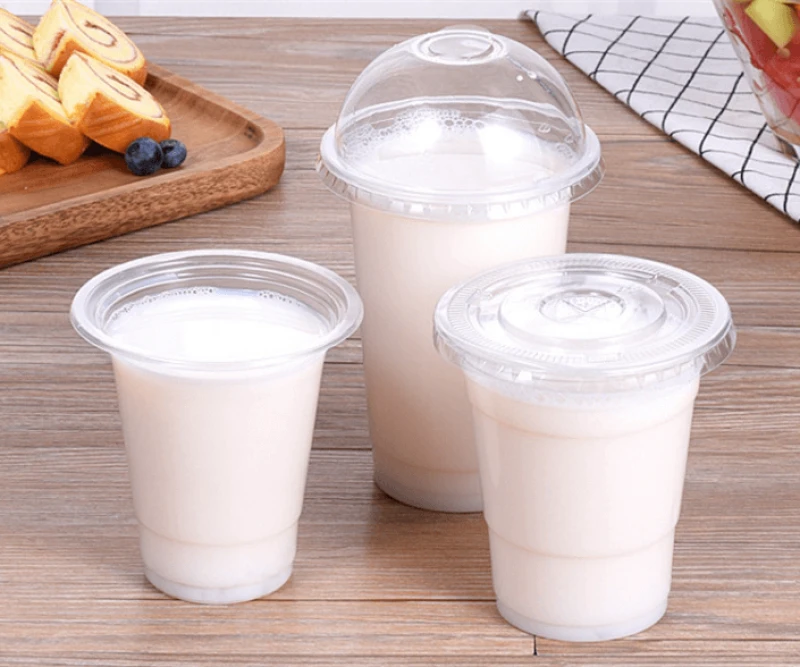Biodegradable plastic made of milk byproducts tackles plastic pollution and food waste all at once
Biodegradable plastic made of milk byproducts tackles plastic pollution and food waste all at once


As the issue of plastic pollution continues to escalate in the United States, a scientist from the Agricultural Research Service (ARS) is developing a new approach to combat it. Atanu Biswas, a research chemist at the ARS National Center for Agricultural Utilization Research in Peoria, Illinois, has spent much of his career exploring ways to convert agricultural waste products into bioplastics.
Biswas’ latest effort involves utilizing dairy waste, specifically lactose, a type of sugar produced by the dairy industry as a byproduct.
One significant advancement in Biswas’ approach is the use of microwave technology, which allows him to make bioplastic polymers quickly. Additionally, because lactose is a disaccharide of galactose and glucose sugars, it may be biodegradable, although further research is necessary to confirm this.
…
While lactose-based bioplastics do not currently replicate the full range of characteristics that conventional plastics offer, they can be useful for certain niche applications like insulation, cushioning material for furniture, footwear, rubber flooring, or some medical equipment.
…
The novel bioplastics represent a “win-win-win situation” for industry, farmers, and consumers. For industry, they provide an opportunity to present a cleaner and greener image while taking advantage of a renewable feedstock that is readily available. Consumers who recognize the problem that plastics present will appreciate a less damaging option for the environment. For farmers, finding a use for what would otherwise be waste is also a win.
This is an excerpt. Read the original post here

 | Videos | More... |

Video: Nuclear energy will destroy us? Global warming is an existential threat? Chemicals are massacring bees? Donate to the Green Industrial Complex!
 | Bees & Pollinators | More... |

GLP podcast: Science journalism is a mess. Here’s how to fix it

Mosquito massacre: Can we safely tackle malaria with a CRISPR gene drive?

Are we facing an ‘Insect Apocalypse’ caused by ‘intensive, industrial’ farming and agricultural chemicals? The media say yes; Science says ‘no’
 | Infographics | More... |

Infographic: Global regulatory and health research agencies on whether glyphosate causes cancer
 | GMO FAQs | More... |

Why is there controversy over GMO foods but not GMO drugs?

How are GMOs labeled around the world?

How does genetic engineering differ from conventional breeding?
 | GLP Profiles | More... |

Alex Jones: Right-wing conspiracy theorist stokes fear of GMOs, pesticides to sell ‘health supplements’




 Viewpoint — Fact checking MAHA mythmakers: How wellness influencers and RFK, Jr. undermine American science and health
Viewpoint — Fact checking MAHA mythmakers: How wellness influencers and RFK, Jr. undermine American science and health Viewpoint: Video — Big Solar is gobbling up productive agricultural land and hurting farmers yet providing little energy or sustainabilty gains
Viewpoint: Video — Big Solar is gobbling up productive agricultural land and hurting farmers yet providing little energy or sustainabilty gains Fighting deforestation with CO2: Biotechnology breakthrough creates sustainable palm oil alternative for cosmetics
Fighting deforestation with CO2: Biotechnology breakthrough creates sustainable palm oil alternative for cosmetics Trust issues: What happens when therapists use ChatGPT?
Trust issues: What happens when therapists use ChatGPT? 30-year-old tomato line shows genetic resistance to devastating virus
30-year-old tomato line shows genetic resistance to devastating virus California, Washington, Oregon forge immunization alliance to safeguard vaccine access against federal undermining
California, Washington, Oregon forge immunization alliance to safeguard vaccine access against federal undermining The free-range chicken dilemma: Better for birds, but with substantial costs
The free-range chicken dilemma: Better for birds, but with substantial costs ‘You have to treat the brain first’: Rethinking chronic pain with Sanjay Gupta
‘You have to treat the brain first’: Rethinking chronic pain with Sanjay Gupta
